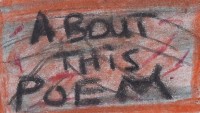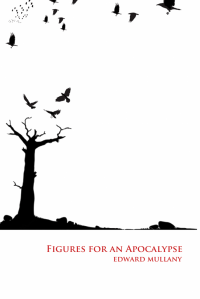 When I first tried to review Personae, I did a bad job, in that I couldn’t do anything but say complicatedly positive things about it. I kept asking myself, what results from praise heaped onto the author, in conversation or in the internets? Does this put food in anyone’s mouth? Does it save a human life? Does it even make a life incrementally better? Certainly not mine. In turn, I find myself asking, what is the goal of a review? To just ‘manically implore’ people to read the book? To provide the critical nuance that distances and individualizes my reading from that of others? To just geek out for a long time and ‘raise awareness’ of an author who my tiny mind thinks merits attention? I hope not any of the above, but I’m left without a good answer. All I want is to point at some facts about my affinity for Sergio de la Pava’s first two novels.
When I first tried to review Personae, I did a bad job, in that I couldn’t do anything but say complicatedly positive things about it. I kept asking myself, what results from praise heaped onto the author, in conversation or in the internets? Does this put food in anyone’s mouth? Does it save a human life? Does it even make a life incrementally better? Certainly not mine. In turn, I find myself asking, what is the goal of a review? To just ‘manically implore’ people to read the book? To provide the critical nuance that distances and individualizes my reading from that of others? To just geek out for a long time and ‘raise awareness’ of an author who my tiny mind thinks merits attention? I hope not any of the above, but I’m left without a good answer. All I want is to point at some facts about my affinity for Sergio de la Pava’s first two novels.
I think his first two books can be presented together despite their glaring differences in tone, form, and narrative approach, and that presenting them together makes them more than the sum of their parts. Much like Kierkegaard’s Either/Or, where a pair of volumes give both sides of the same moral problematic two faces of the common currency of life in our epoch. Towards the end of A Naked Singularity, an exchange is punctuated by a memo from a jail is perhaps the most infuriating and heartrending moment in the book, and betrays a deeper interest in form. The text of the letter has been copied, re-used, and had names of inmates impersonally inserted into it’s sentences on countless occasions, leaving them incarcerated even after their deaths, in the forms which serve as the only record of their existence.
Seeing the final form-letter, without even reading the words there, opened a valve inside me – I cried the entire day and wasn’t even finished with the book. Some summer campers observed me as a curiosity, weeping and furiously turning pages. Though I would go on to the end of the book, everything else seemed to swirl around that exasperating moment of intrusion. What I can say about Personae is that it is indeed a novel, but comprised of stories, plays, allegories, and translations, and with a plot that hovers above the text itself. Together they exhibit some of the superstructure of an epochal conflict between positivist and skeptical thought, one that has gone on much longer than the war on drugs. Since I am not in a position to review it, I decided to ask Sergio for an interview, which he granted.
Read the interview below:
***
CJ Morello: Hi there. So i heard the PEN Talking Transitions panel the other night where writers and other folks were given the chance to give recommendations to the incoming administration of NYC about how to ensure that NYC remains at the center of the scene of literary production. Your response was distinctly out of keeping with other answers, and you addressed the problem of incarceration. Would you like to elaborate on that a little bit?
Sergio de la Pava: Look, I like art, I like poetry, I love the novel, I love literature,I wouldn’t have devoted a substantial portion of my life to creating novels if I didn’t, but in that context, if I am nominally, allegedly addressing an incoming administration, that is a political situation. That is not an appropriate time for me to ignore what is the plight of indigent and marginalized members of New york City. I don’t think I was talking out of score in the sense that I warned them, look, if you’re going to invite me to this thing, I know that the subject of the evening is supposed to be encouraging the artistic prominence of New York City or whatever, that’s not what I’m going to address in any way. I’m going to address specifically what I made reference to, that crime has declined significantly in this city and really throughout the entire country, and I mean serious crime, burglary, robbery, has gone down drastically in this city and in many other places. Somehow contemporaneous with that fact, arrests rose 20% during the Bloomberg administration. So the idea was to hopefully begin a dialogue, though in that limited context there was no way to address such a complex issue, other than to bring up that anomaly in the hopes that you might cause some people to wonder how exactly we can justify such an inapposite result.
CJ: I hope some people did. There are some crimes we do want to see curtailed and prosecuted, especially violent crimes with deadly weapons. I grew up in Chicago, and there we have more problems than we can reliably handle, especially on the south side. So how do you explain that?
SP: Well I think with the Chicago situation you’re probably not even seeing decrease in crime, you’re seeing the result of decades of the evisceration of these communities through these draconian laws and the selective enforcement of drug laws. So what you’re seeing in Chicago, I’m not a sociologist, I’m not a criminologist, but what you’re seeing is the result of decades of neglect and even worse, active brutalization of these communities. It doesn’t take a genius to figure out that if you’re incarcerating an incredibly high percentage of people who look a certain way and live in certain neighborhoods, the effects on those neighborhoods are going to be stark. That’s not what were seeing in New York City, we’re seeing a massive decline in things like homicides, and gun-related offenses. So what we are seeing in New york City is certainly different than Chicago, in that what we have going on is the redefinition of the very concept of crime. So the attitude that policing has taken in this city has been to keep arresting as many people as and bring down the barrier to what constitutes a crime. The problem with that is, no matter what ultimately happens with the case, it turns out it’s a really bad thing to be arrested. It is really bad for your ‘career’ lets call it, it’s really bad for your status in society. Even if you never spend more than a day in jail before your release, it’s a really bad thing to end up with a criminal record. That’s pretty clear-cut. And there’s been a movement recently to essentially ban the asking of that question when you’re applying for jobs and things like that. The bottom line is once you get tagged with a criminal record in our society, it’s an uphill battle. And if you have a criminal record and you happen to be a minority, the research shows, there’s basically two strikes against you and it’s going to be difficult to overcome. So Chicago and New York seem to be on two different sides of the coin. What you are seeing in Chicago is basically a consequence of what you have happening in new york.
CJ: So we’re ahead of the curve.
SP: Unfortunately.
CJ: To cap off the violence section of the interview, you’ve said you’re a fan of boxing but also that UFC is something you enjoy less. I never really watched many fights growing up but recently I was introduced to UFC through some friends in California. So what do you think the salient differences are in the two sports and where does your boxing allegiance come from?
SP: It seems to me that the average UFC fight ends much faster than the average boxing match. I think that the fights have a maximum of? Three or four? The championships go five. And the average boxing match can go on for twelve… I mean when you say I’m a huge fan of boxing, I’m very much intrigued by it, I have an ambivalent view towards boxing as well. In that I don’t like to see people get hurt, and that can become a substantial part of boxing. It certainly seems to be a substantial part of UFC. It could just be the prejudices of what you grew up watching, I grew up watching boxing, there was no such thing as UFC. I trained in martial arts before it was called UFC, when you picked an actual martial art. I understand that there can be beauty in UFC too, I guess what I like about boxing is the ebb and flow, and the prolonged dance between two athletes that will eventually tell me something about those two individuals. It seems to be harder to find in UFC, but I have many people who tell me I’m crazy, that UFC is far better. I agree that from a spectacle standpoint, UFC seems like it’s more likely to yield the kind of spectacular visuals that you might only see in boxing once every ten fights. So you may see a higher instance of those spectacular visuals, but thats not what I come to boxing for, I come to boxing to see the struggle of two wills, and though I recognize that is part of UFC too, the brevity of it, the sheer violence of it, for me makes me difficult to enjoy.
CJ: You said in another interview that we want the novel to be a highlight reel, not every play. The distillation or condensation of the elements that are important.
SP: So I think that context, the question was asking about what responsibility a novel has to ape life. And I think it has very little responsibilities to that. Take dialogue. If I tried to create dialogue that replicated the way people spoke, it would be intensely boring, a lot of um, it would be a lot of how’s the weather. Right off the bat a certain amount of the heightening of life is going to be necessary in something like A Naked Singularity. So the question becomes why you’re doing that and what effects it is you’re seeking to create. So I don’t take it as criticism when people tell me for example “The way people talk in your books isn’t the way they talk in real life.” So it’s like, do you find the way people talk in real life to be so enthralling? Well then you don’t need to pick up a novel. You have people taking to you all the time in real life.
[pause]
SP: In other words when I sit down to write a novel, mimicing life perfectly, well it is not a documentary. And we know even a documentary really doesn’t do that. And whatever a novel is, and I don’t have the firmest grasp on what it is I’m trying to do, I think really low on the list of those things is replicating quotidian existence. And the flip part is, whenever I try to make a definitive statement related to this thing called the novel, I always find myself contradicting myself. And the truth of it is, there are parts in ANS that deal with the criminal justice system that really do attempt that, that strip away the artifice and the heightening, that really do give a view, a pretty accurate account of what it’s like to unmediatedly come into contact with a trial. But that’s about ten percent of it at most.
READ MORE >






 Figures for an Apocalypse
Figures for an Apocalypse
 When I first tried to review
When I first tried to review  Have
Have 
![[Exodus Diptych]](http://htmlgiant.com/wp-content/uploads/2013/12/Unfolding-Have02-500x157.jpg)
![[from To Have Witnessed]](http://htmlgiant.com/wp-content/uploads/2013/12/Unfolding-Have03.jpg)
